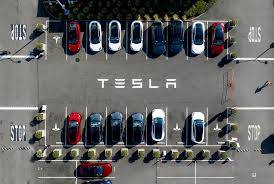US Agency Says Tesla’s Public Statements Imply That Its Vehicles Can Drive Themselves – But They Can’t
Tesla, the American electric vehicle manufacturer known for its cutting-edge technology, has faced a serious rebuke from the U.S. Federal Trade Commission (FTC) over public statements made about the self-driving capabilities of its vehicles. According to the FTC, Tesla’s marketing and public communications have suggested that its cars are capable of fully autonomous driving, a claim that the agency says is misleading. In reality, the vehicles require human supervision and are not capable of driving themselves.
The Allegations: Misleading Public Statements
The controversy stems from Tesla's marketing materials, advertising campaigns, and statements made by CEO Elon Musk, which have implied that Tesla cars with "Full Self-Driving" (FSD) capabilities could operate autonomously without any human intervention. Despite these claims, the cars are still reliant on a human driver for oversight, and Tesla’s Autopilot and FSD features are currently considered advanced driver assistance systems (ADAS), not fully autonomous technologies.
The FTC’s investigation suggests that Tesla's language—especially its use of terms like "Full Self-Driving" and "Autopilot"—could lead consumers to believe that Tesla vehicles are capable of full autonomy. However, these systems still require drivers to maintain control of the vehicle and be ready to intervene in case of an emergency. Tesla’s own documentation and warning labels on vehicles stress that drivers should keep their hands on the wheel and be prepared to take over at any moment.
In its public statements, Tesla has touted the capabilities of its self-driving technology, with Musk even predicting that fully autonomous vehicles would soon be a reality. These optimistic predictions have not been met, and experts agree that achieving true autonomy—where a car can drive itself without human intervention in all conditions—is still far from being realized.
The Realities of Tesla’s Technology
Tesla's Autopilot system, which is available on most of its vehicles, can handle certain aspects of driving, such as steering, accelerating, and braking under specific conditions. Similarly, the Full Self-Driving (FSD) package adds more advanced features, such as automatic lane changes, navigating intersections, and summoning the car. However, none of these features allow for true autonomy.
The National Highway Traffic Safety Administration (NHTSA) and other safety regulators have repeatedly emphasized that Tesla’s vehicles should not be considered fully autonomous. According to them, while the systems are impressive, they do not replace the need for active driver engagement. Tesla's own documentation, while not always clear, acknowledges that drivers must remain alert and ready to assume control at any time.
Consumer Confusion and Safety Concerns
The FTC's concerns are based on the potential for consumer confusion. Many Tesla owners and potential buyers may be under the impression that their vehicles are capable of autonomous driving, despite the clear limitations of the technology. This misunderstanding could lead to dangerous situations where drivers overestimate the car’s abilities, potentially resulting in accidents.
A number of high-profile crashes involving Tesla vehicles have raised questions about the limitations of its Autopilot system. In some cases, the system has failed to respond to obstacles or critical driving situations, leading to fatalities. While the cars involved were still under human control at the time, the fact that drivers may have been misled into trusting the technology more than they should have remains a point of concern.
Tesla's Response
In response to the FTC’s concerns, Tesla has insisted that it accurately markets its vehicles and that the term "Full Self-Driving" is intended to describe the vehicle's capabilities as they exist today—an ongoing work in progress. The company has argued that it continues to improve its software through regular updates and has consistently communicated the limitations of its systems to users.
Tesla’s stance reflects its belief in the long-term potential of autonomous driving, with Musk continuing to assert that true autonomy is just around the corner. However, until these promises are fully realized, the company faces scrutiny for its marketing practices and the risk of misleading consumers.
Conclusion: A Critical Moment for Tesla and Autonomous Vehicles
The FTC's warning about Tesla’s public statements on self-driving technology highlights an important issue in the development of autonomous vehicles. As the industry continues to evolve, it is crucial that automakers clearly communicate the capabilities and limitations of their technologies to avoid potential dangers. While Tesla’s advances in electric and autonomous driving technology remain groundbreaking, the company must ensure that its customers understand the current state of the technology and the importance of maintaining control behind the wheel.
In the race to develop fully autonomous vehicles, the road ahead is still long, and for now, drivers must remain vigilant. Tesla’s case serves as a reminder that while the promise of self-driving cars is exciting, the reality of safe, fully autonomous vehicles is still in the making.


